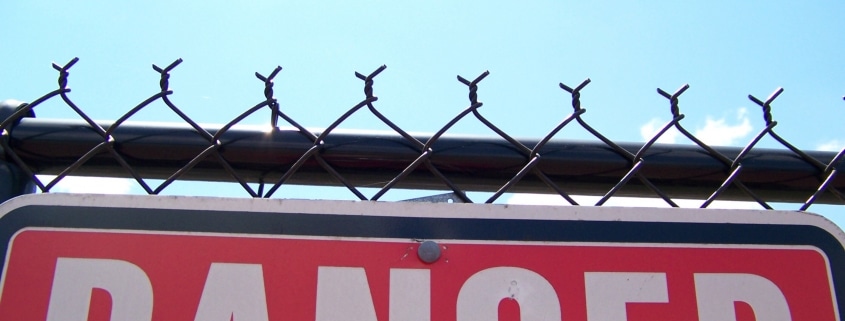The Dangers of Asbestos
Asbestos is a natural silicate mineral that produces a silk-like fibrous crystal. This fiber can be spun into yarn or added to other materials to increase its durability.
We have used asbestos in the construction of a variety of materials since ancient times. Even excavated pieces of pottery from the stone age contain asbestos!
As human civilization developed, the use of asbestos grew. They weren’t just using it in pots, but also weaved it into fabrics. The Romans built with it, the Egyptians wrapped their mummies in it, and medieval knights wore clothes made of it inside of their armor.
When Were the Dangers of Asbestos Addressed?
 The tradition of crafting with asbestos has persisted for thousands of years, even to this day.
The tradition of crafting with asbestos has persisted for thousands of years, even to this day.
It wasn’t until the middle of the 20th century when people realized the genuine dangers of asbestos and the lung damage it caused. This stirred up a controversy surrounding the material, and a legal war began that has gone on for over 50 years.
Manufacturers would not let go of the material. After all, asbestos resists corrosion, fire, and electricity unlike anything else. It is also an excellent insulator for both heat and sound.
And it’s readily available all over the world.
Since it is a naturally occurring mineral, it isn’t hard to find. Even to this day in Nevada, the mineral is literally scattered across the earth. But I wouldn’t go near it if I were you!
In 1999, the UK banned the material, and many other nations have followed suit. But the United States continues to incorporate it in many areas of construction.
What Makes Asbestos Dangerous?
The trouble starts when asbestos becomes airborne. Since it’s like cotton candy when you pull it apart, sharp microscopic fibers scatter in the air. These particles of asbestos will float for an extended time, making it easy for large amounts of it to be breathed in.
Once asbestos enters your lungs, it never leaves.
No matter how much your body tries to get rid of it, it won’t budge. That’s because it’s hydrophobic and repels mucus that would normally push it up and out of your body.
Within 10 to 30 years after exposure, your brush with asbestos can come to haunt you as asbestosis or mesothelioma. Over 200 people die per day from asbestos exposure.
Where Can You Find Asbestos in the Home?
No doubt, you have asbestos somewhere in the building you are sitting in right now. Depending on how long ago they built the property will determine just how much it contains. American homes were constructed with the most asbestos between the 1940s and 1970s before laws cracked down on it.
Unless you have insulation on an antique boiler or pipes, you shouldn’t have asbestos lying around for you to breathe in. Common materials that could contain asbestos include:
- Vinyl flooring
- Linoleum
- Industrial glues
- Caulking
- Glazing
- Plaster
- Asphalt shingles
- Air duct insulation
- Siding
- Blown-in insulation
- Paint
Undisturbed, most products containing asbestos are likely safe because they seal it within binders that lock it into the material. Particles aren’t in the air and they stay that way…for a while.
But as soon as those materials are damaged, the danger becomes real.
When asbestos products become brittle, break or crack, you have reason to worry. People who DIY their home improvement projects may sand or saw these materials without realizing that the fibers become a particulate matter that we can breathe in.
Even professional home renovation become a serious threat to health and safety. When hired contractors underestimate the dangers of asbestos and mishandle these materials, they put everyone nearby at risk.
That’s why it’s always important to have a trained inspector oversee large repairs or home remodeling, especially if it involves removing parts of your walls, ceiling, or floors.
Safety Precautions
Products that contain asbestos must be handled in a special way that protects the wellbeing of everyone in the vicinity. Repairing damage is easier (and cheaper) than removal.
Any removed materials must be disposed of properly by an abatement contractor — not dumped in a landfill.
If asbestos is found in your home or commercial property, your inspector will provide you with a thorough report describing where it is and what damage was found. Further air samples can be taken to test for asbestos levels.
If there is immediate concern, your inspector will help you understand what steps you should take to correctly address the safety issue.
Inspection Services in Tampa, St. Petersburg, Land ’O Lakes, New Port Richey, Brooksville, and Wesley Chapel
If you have an extensive renovation project planned, new construction, or need an inspection for a home or commercial property, schedule an inspection with Divinity Inspection Service today!
We offer a large variety of inspections for all your residential and commercial property needs. Our inspectors thoroughly examine your home, apartment building, or business to provide you with a meticulous report that you can depend on!





Leave a Reply
Want to join the discussion?Feel free to contribute!